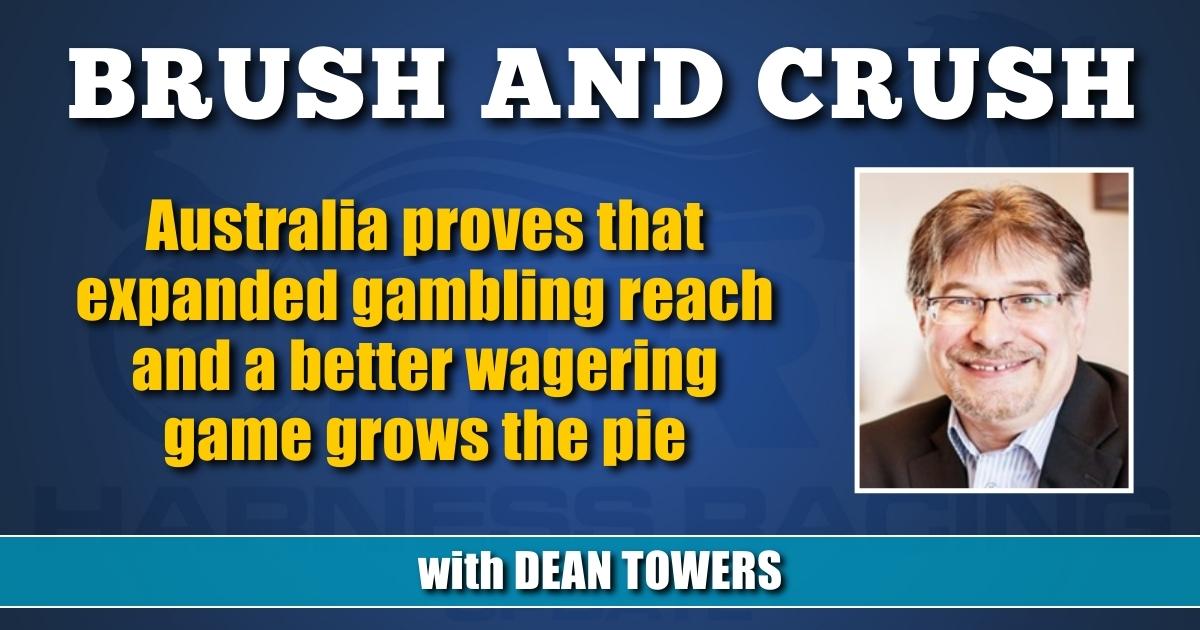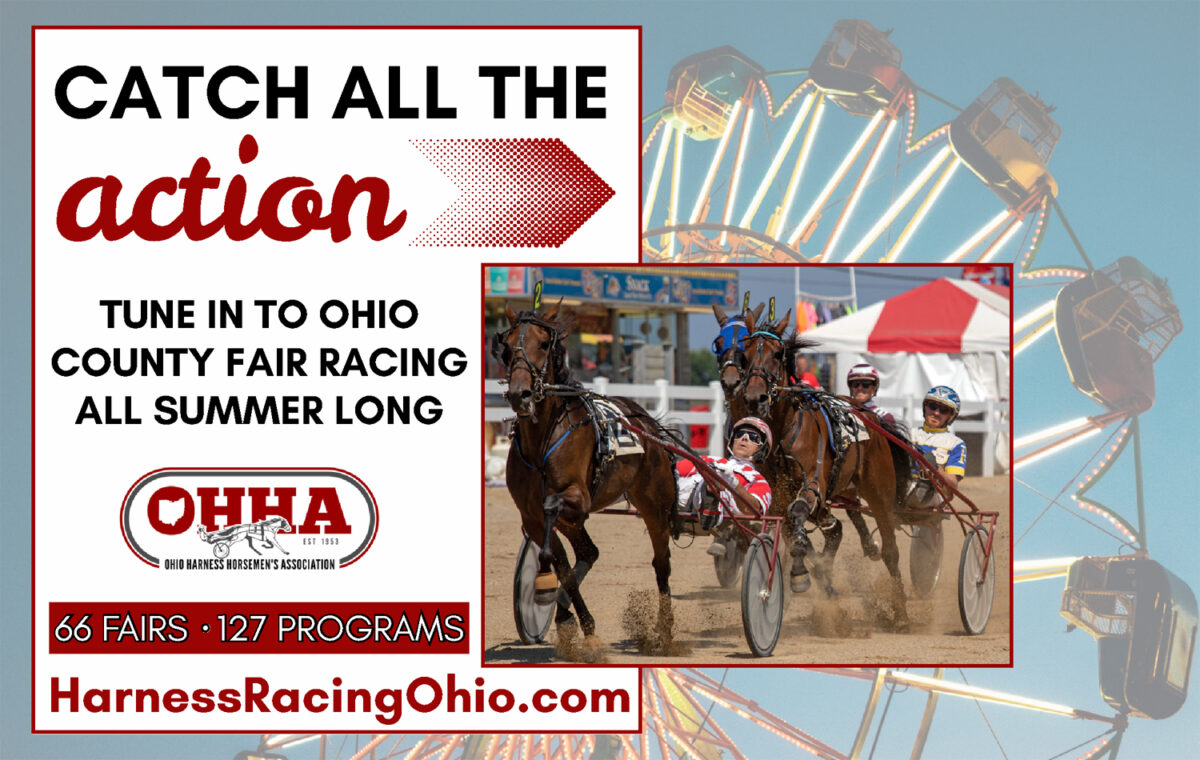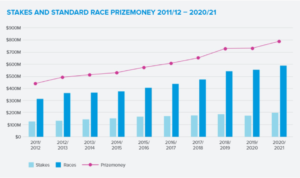Australia proves that expanded gambling reach and a better wagering game grows the pie
Wagering in 2021 continued to show strong growth and North American
racing can learn something from it.
by Dean Towers
Back in 2008, Australian racing was facing change. New technologies and betting exchanges were being allowed, and sports betting was moving beyond its nascent stage with corporate bookies. The business was opening up.
To some in the industry, these new outlets and increased competition meant the sky was falling, and it had to be stopped at all costs.
The head of Racing New South Wales at the time said, “this is the biggest problem the racing industry has ever had. We are not being paid to put the show on, and it means that all our 50,000 participants will lose.”
We can’t really blame him, can we? New ways to wager (including much at low takeout like betting exchanges), sports betting and a virtual destruction of the TAB horse racing monopoly could not possibly be a positive development.
A funny thing, though – the exact opposite happened.
FROM 2011 TO 2021:
Thoroughbred racing turnover grew from (all figures, $AUS) $14.3B to $29.1B
Harness and greyhound handle moved from $6.1B to $14.3B
Sports betting – which we might surmise would cannibalize horse racing if it was successful – increased from $3.2B to $16.6B
Yes, all wagering is up.
The argument that growing handle but taking less off a wager (lowering takeout) and allowing those outside the industry to offer wagering would lower purses, certainly hasn’t borne fruit either.
PRIZE MONEY GREW FROM $439M IN 2011 TO $800M IN 2021.
The number of races and race meets, unlike here in North America, did not decrease. They have held their own. Foal crops are down from 2011, but they too have leveled off the last several years.
What’s fairly remarkable is over the past 10 years, in Australia, like in North America, horse racing is less popular than it was with gamblers. According to Gambling Research Australia, the number of people who gambled on horse racing last year was down over 20% from 2011. Dr. Alex Russell, the reports’ co-author, noted that fewer people are betting, however, those who wager, are “betting a ton, driven by more and more online gambling.”
This a very important fact, and one you’re no doubt bored of seeing me type: The existing bettor base is pre-qualified to play the sport; they have disposable income, they have ADW accounts where they are captured. If we increase their churn rates with low takeout, incentives, better wagering mediums and better education to get them to bet more, they will.
These people are the sport’s lifeblood, and maximizing their handle is vital. Purses, more race meets and better foal crops are the fruit of such endeavors.
Here in North America the sport, in my view, thinks far too much like 2008 Australia did. It plays scared. It fears entering a world of betting exchanges (they were tried here, at 12 per cent takeout, which defeats their purpose); it rarely embraces or invests in anything new that can help a customer; if bettors win more with lower juice, they seem to fervently believe the industry loses.
Everything is not rosy Down Under. The sport is still less popular than it once was. Harness racing has its issues and the overall sport has problems just like everywhere else. But one thing they have proven without a doubt – if you don’t fear the future, you can be a part of it. And the future’s not half bad.



















